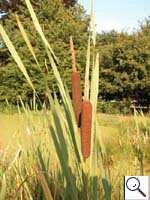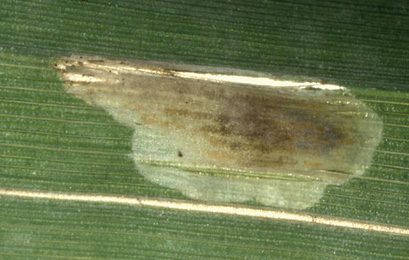|
||||||
|
TYPHA. Bulrushes. [Typhaceae] |
|
|
Three species of Typha are recorded in Britain. These include the native Lesser Bulrush (T. angustifolia) and Bulrush (T. latifolia). The BSBI provide a downloadable plant crib for Typha. Three British miners are recorded on Typha. A key to the European miners recorded on Typha is provided in Bladmineerders van Europa. |
 Bulrush Typha latifolia |
Key for the identification of the known mines of British |
1a > Leaf-miner: Irregular mine, locally shallow, elsewhere much deeper, giving it a mottled appearance. In broadleaved plants the mine often begins as a blotch with stellate extensions, but sometimes as a very fine, shallow corridor. In grasses the mine often begins in the leaf sheath. The frass is very fine-grained, initially scattered, later in aggregates. The egg is deposited on the plant surface, and the empty egg shell remains visible. But the larvae are able to leave their mine and restart elsewhere, thus mines without an egg shell can be found as well. The larva also leaves the mine before pupation. Pupation takes place in a newly made, small, blotch mine without frass; this mine may be made in another plant (species). |
|
|
Hydrellia griseola (Fallén, 1813) [Diptera: Ephydridae]. |
1b > Leaf-miner: The slender larva mines the leaves, stems and upper rootstock. |
|
| Calamotropha paludella (Hübner, 1824) [Lepidoptera: Crambidae]. |
1c > Leaf miner / Stem-borer: Narrow gallery in a young leaf. After having mined for some time the larva becomes a borer in the stem or rhizome. The larvae feed inside the stems. |
|
| Orthotelia sparganella (Thunberg, 1788) [Lepidoptera: Glyphipterigidae]. |
| Last updated 26-Jun-2019 Brian Pitkin | ||

